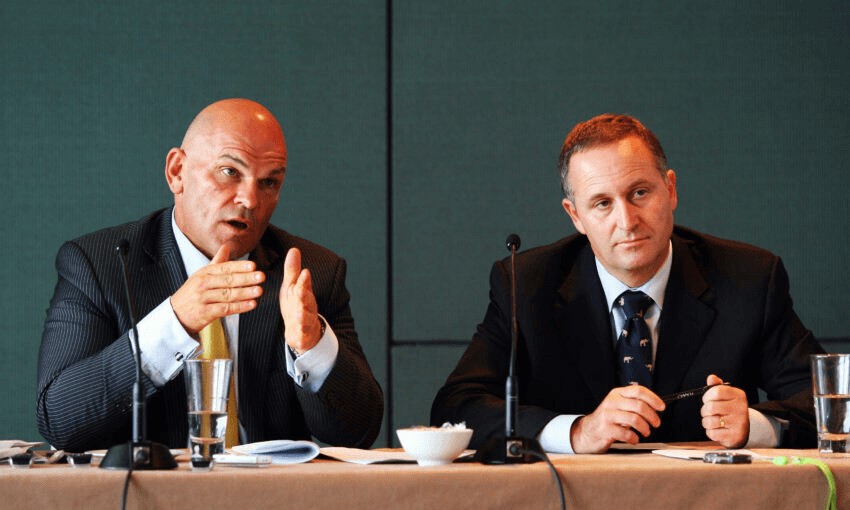Penny Hulse served as Waitākere deputy mayor before the great amalgamation – and as deputy mayor of the Super City for six years from its inception on November 1, 2010. Here she looks at the ways the new structure helped Aucklanders, and how it let them down.
Maybe it is my age, maybe it is the weird Covid times but lately everything feels that it happened either last month or about a decade ago. Thinking back to the start of the Super City is a bit like that. Waitākere council still feels so recent, but it all came to an end 10 years ago.
Seeing the posts on Facebook this week, with former staff still mourning the loss of Waitākere council, is touching. Remembering the extraordinary Mayor Bob, our wonderful diverse eclectic community keeping us on our toes. We did good work out west, pushed through some amazingly innovative projects. We were passionate, brave and despite all the challenges faced by west Auckland communities, our people were empowered and expected and got support and partnership from their council. As mayor and deputy mayor, Bob Harvey and I marched with our staff and our community to try and stop the “Super City”. We lost.
So how has the last decade gone? Has the Super City delivered?
Despite all our misgivings, there have been some positive outcomes.
Amalgamating Auckland has given the city gravitas, a city of 1.6 million gets taken seriously and despite the reluctance by successive governments to acknowledge the funding needs of Auckland, this is finally improving. Investment in infrastructure like public transport has been possible at a much more strategic level. We continue the light rail versus heavy rail debate and the west is still waiting for our busway, but look how far we have come with City Rail Link (thank you Mayor Len).
With the Unitary Plan in place, we have managed to turn up the dial on development in key areas to support this transport investment and to also tackle our carbon emissions and start to address our dire water quality issues. Without a regionally coordinated approach, this kind of work would never have been impossible.
A regional equity lens means that the underinvestment in community in some areas is being addressed, improving sports fields throughout the region, building playgrounds and focusing on regenerating neglected areas. This redistribution of resources causes tension but with a regional approach, it is much easier to achieve this. This is helped by the fact that we have a much more representative group of elected members, reflecting our ethnic diversity in Tāmaki Makaurau.
So while we have had some wins by being big, are we too big to still be meaningful to our community?
This is where it gets tricky.
In 2009 the Royal Commission on Auckland Governance presented their well considered, well researched and scholarly 3,000 page report to the new National-led government. It was essentially rejected by the then minister of local government, Rodney Hide, who apparently chatted to a few mates and got a PR company to write his 18-page report in a couple of weeks, trashing all the sensible recommendations and ironically embedding in the flaws that are the most loudly criticised components of the Super City.
The commission had recommended six empowered community councils to deliver local initiatives and a regional council that was responsible for planning, investment and asset management.
Hide decided to create 21 local boards, ceding responsibility to some of the council-controlled organisations to set policy and removed as much control from elected councillors as possible, giving rise to the loudest criticism we hear about the Super City: “the CCOs are out of control!”
This combination of small, underpowered and under-resourced local boards and empowered CCOs has created tension.
I acknowledge that good work is done by the local boards but they still have to come “cap in hand” to the governing body for funding and this means that a dynamic is created that is unhelpful. The community also does not generally see the local board as their key connection with council. Larger community organisations are frustrated at having to work across several local board areas and lack of collaboration between boards means that opportunities for sharing resources are not explored.
Our councillors have a huge workload and get frustrated at the lack of local connection and involvement with their communities as they are expected to focus on regional issues but are elected locally. This can make the relationship between local boards and councillors fractious.
The CCO review has been helpful but I believe that it missed a couple of opportunities, reconnecting communities and local politicians with Auckland Transport would go a long way to rebuilding trust and confidence in the system. This for me gets to the heart of the issue 10 years on.
The Super City is complex and at times unfathomable. What layer do you go to if you want to find out about a local event, get the bloody flax cut back on the cycle way, ask about your rates, volunteer for a beach cleanup? Who knows?
The plan was to make Auckland less fragmented. The result is we are just as fragmented as we were, just sliced up differently.
So maybe 10 years on it is time to go back to the well crafted and thoughtful submissions from the previous councils as they tried to work with the Royal Commission to design a new Auckland. They saw all these potential problems, and crafted solutions to them, as did the commission.
We should not recreate the past, we need to gather all the good stuff about our Super City and confidently reshape the bits that are no longer fit for purpose. Auckland is an extraordinary city and I am so proud to have been a small part of it, but I hope we keep pushing to be more extraordinary and not just more cost effective.
